There has been a commonly asked question in terms of tires in the past few months, and it revolves around fuel economy. As the prices keep going up, people are looking for ways to cut down on those costs.
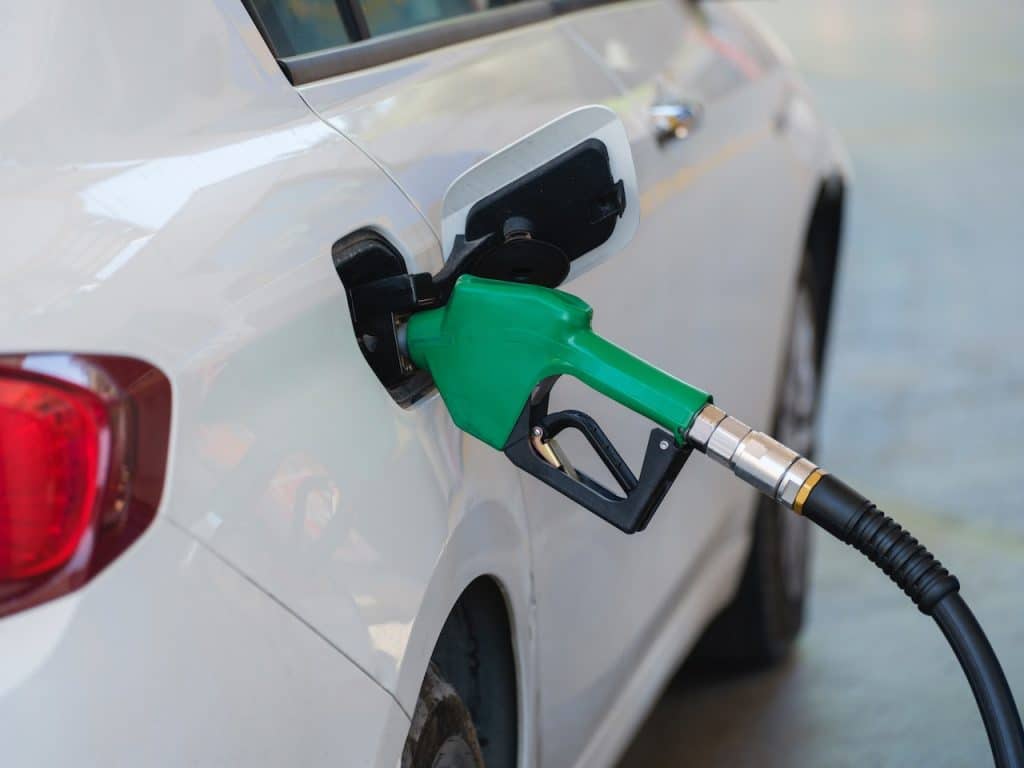
Multiple factors determine your car’s fuel consumption. The broadest list includes the engine, the weight of your car, the driving habits, and the thing I’ll be talking about today – the tires.
The only part of the car that touches the road is the tires which deliver their performance using friction. As the tire rotates, microscopic “claws” grip the road, enabling it to get your car moving, help it turn in corners, and stop. If a tire has more friction, it will have better performance, but it will also consume more fuel.
A solution to this problem is the production of tires with lower rolling resistance. For the most part, they are touring tires where manufacturers aim to make them more fuel-friendly, refined, and longer-lasting. This is why performance-oriented tires do not mention the rolling resistance because their goal is entirely different.
Today’s list will include 10 tires with lower rolling resistance, designed to help you with fuel economy. There is a big disclaimer here that I have to mention. A tire can affect fuel consumption, but don’t expect miracles. If you have a massive V8 that does 20 MPG won’t be magically as effective as a Prius. These tires can help increase a few MPG, and that’s as much as you should expect from them.
#1. Michelin Energy Saver A/S
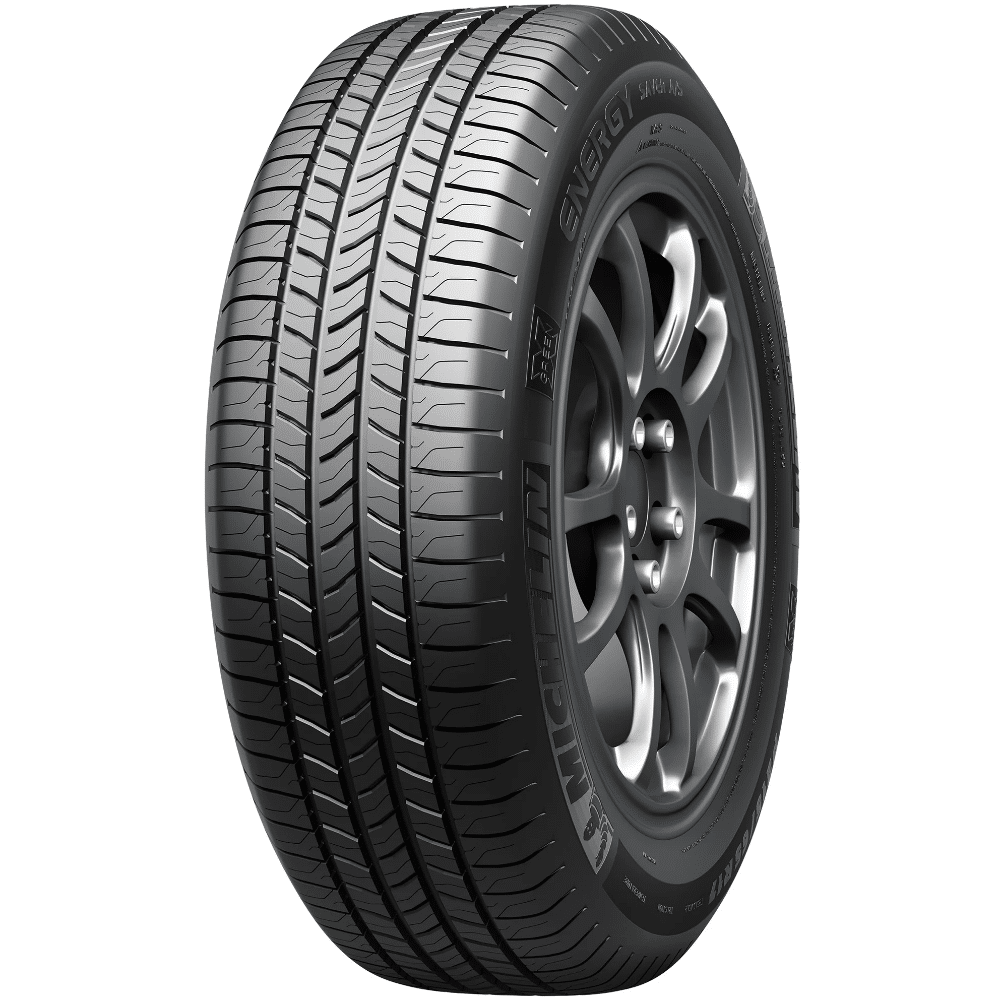
Price Check
Check the price of this tire at the following retailers:
Amazon TireRack DiscountTire Goodyear PriorityTire SimpleTireDon't know the correct size tire to purchase? Start here!
I’ll start with the obvious one practically advertised as a tire with lower rolling resistance. Michelin, as a premium manufacturer, puts a lot of effort into making its tires the best of the bunch, so the Energy Saver A/S is one of those, with the main goal of helping your fuel economy.
As a touring tire, the Energy Saver A/S is a tire that can deliver plenty of performance in dry conditions, as long as you’re aware of its limitations. The grip and traction levels are more than enough for everyday driving around town and may even suffice if you decide to ignore the increased fuel consumption. You have relatively decent handling, and while it isn’t sporty, you can have a bit of fun. In terms of braking, the distances aren’t industry-leading but are near the top for this class.
Wet is another area where the Energy Saver A/S delivers excellent results, but it’s not perfect. Starting with the grip and traction on damp roads, the tire doesn’t disappoint. There is more than you’ll ever need for normal driving, and even in an emergency braking, the distances are quite short. The aquaplaning resistance is where the results are mixed. In a straight line, the tire remains very stable, which is a good thing. The not-so-good thing is that it becomes a bit twitchy at higher speeds in the corners.
Unfortunately, the winter performance isn’t outstanding. The Energy Saver A/S deals with cold roads pretty well and will fair decently well with light unpacked snow, and that’s as much as you should ask of it. Performance on packed snow is not very usable as the tire will struggle for traction, and the same can be said about deeper snow. Driving on ice is out of the question, as the tire is completely useless in those conditions.
In the refinement department, things aren’t all sunshine and rainbows. As you’d expect from a touring model, the Energy saver A/S is a very comfortable tire. It can soften up bumps, absorb vibrations, and deliver a plush ride. The problem occurs in the noise, which is fine for the most part, except over rougher roads. Smooth surfaces aren’t a problem, and the tire is very quiet, but on rougher surfaces, it can produce a noticeable hum.
The price isn’t the most affordable one and starts from around $160, which is what you should expect when you’re going premium. For that, you get a 65,000 or 55,000-mile treadwear warranty, depending on the speed rating, which is more or less as you’d expect.
Pros
- Plenty of grip and traction in dry and wet conditions
- Comfortable
- Braking distances are short
Cons
- Poor performance on snow
- Not the cheapest of the bunch
#2. Goodyear Assurance Fuel Max
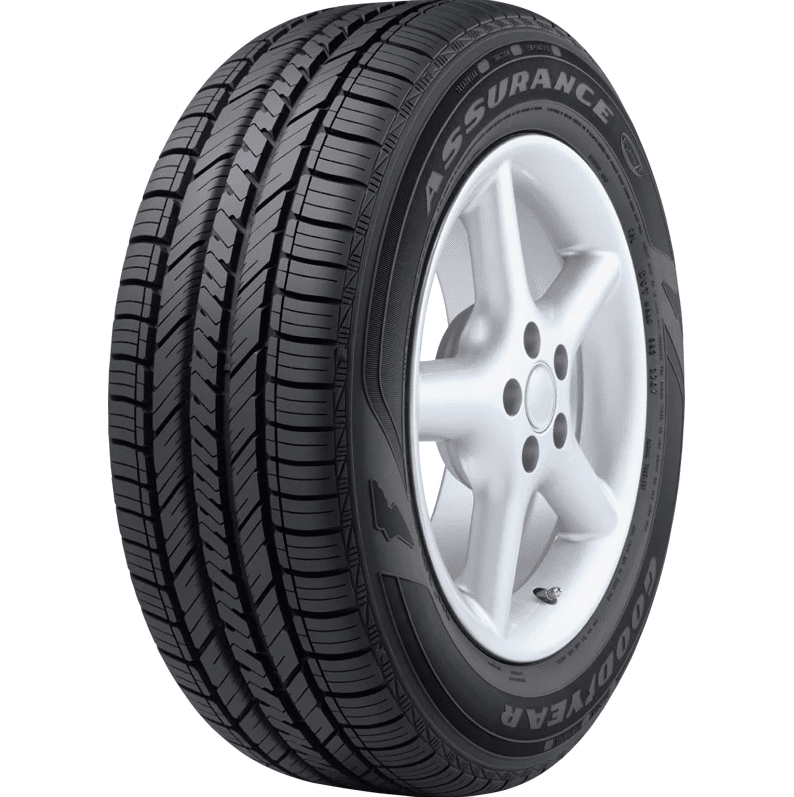
Price Check
Check the price of this tire at the following retailers:
Amazon TireRack DiscountTire Goodyear PriorityTire SimpleTireDon't know the correct size tire to purchase? Start here!
I’ve you’ve read my review of the Assurance Fuel Max, you probably know that I didn’t praise it too much in terms of performance. With that said, today we’re talking about fuel-saving tires, something that this one can do well and not feel like it lacks the performance for it.
The dry performance is very good for everyday driving and can handle going into a corner at a higher speed. It’s not terrible in that regard, and combined with how stable it feels at higher speeds, most car owners will be fine. My biggest problem was with the handling, which isn’t on the same level as its premium rivals. The Assurance Fuel Max isn’t the most responsive tire on the market and feels a bit sluggish when you’re driving on a twisty road and want to have some fun.
In wet conditions, the Assurance Fuel Max also isn’t the best in the class and is a bit of a letdown. For accelerating normally, the tire does a good job and has no slip, which is what most people would be after. If you push it a bit, it will start to slip, even more than some mid-range tires. The levels of grip are quite good, and you can go around a corner without feeling the front end pushing forward. You also have relatively good aquaplaning resistance, but the braking distances are a tad longer than I was hoping.
Winter driving with the Assurance Fuel Max is more or less similar to the Michelin tire. You can use it on clean roads or only if the snow isn’t deep, so an inch or two should be fine. With that said, I’d still advise you to be cautious as it can feel unsteady in these conditions. As for the harsher ones, don’t even try it; it’s not a good option for that.
Moving away from the bad news, we come to the good ones, and that’s the refinement. The comfort levels of the Assurance Fuel Max are excellent, and the tire feels very premium. You may feel an occasional jolt from a larger pothole, but even that feels well dampened. The noise levels are acceptably good but far from perfect. At slower speeds around town, the tire is quiet, and you probably won’t pay attention to it. The noise increases mainly on the highway, and while it isn’t intrusive, it’s noticeable.
Warranty-wise, things are similar to the previous model. You get a 65,000-mile treadwear warranty which is on par with the rest of the pack. Price is what makes it more attractive, and with a starting price of around $110 for a similar size like the Michelin, I can understand why it’s a sought-after model.
Pros
- Aquaplaning resistance is excellent
- Very comfortable
- Pretty good dry performance
Cons
- Wet performance is average
- Not very usable in winter conditions
#3. Bridgestone Ecopia H/L 422 Plus
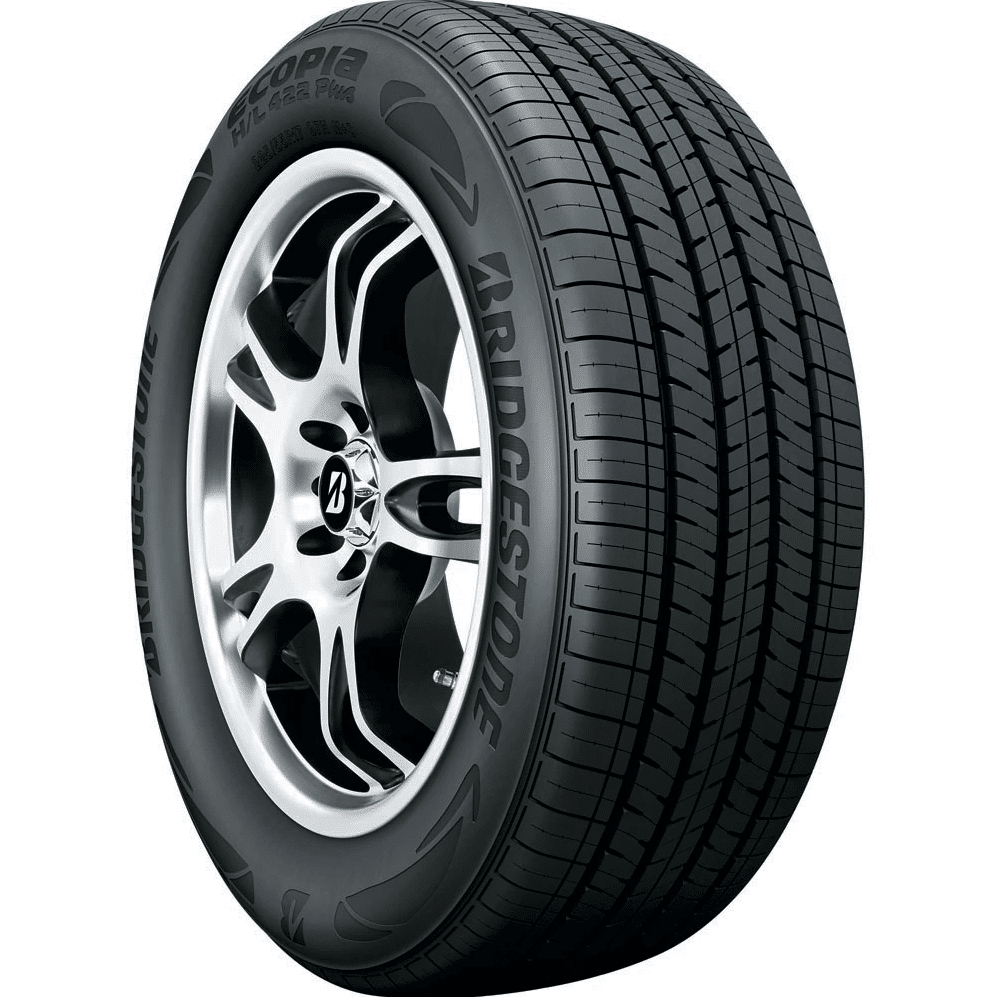
Price Check
Check the price of this tire at the following retailers:
Amazon TireRack DiscountTire Goodyear PriorityTire SimpleTireDon't know the correct size tire to purchase? Start here!
Even SUV or CUV owners want to save a few bucks on gas, so here’s an option from Bridgestone. The Ecopia H/L 422 Plus is a tire designed with low rolling resistance in mind, which is why it’s on this list. It comes as the third upgrade of this lineup, offering multiple improvements over the years.
The Ecopia H/L 422 Plus may not win any awards on the track, but it’s an excellent option as a touring tire on the road. It can deliver high levels of grip in the corners, more than you’d probably need. Acceleration isn’t an issue, and even if you’re aggressive, there will be almost no slip. The best part is that it’s not terrible in the handling department as a touring tire. It’s pretty responsive, and the stability is excellent at higher speeds.
Wet performance is another big Plus for the Ecopia H/L 422 Plus as it continues to impress. There is plenty of traction to get going, and in the corners, the grip is very high, keeping things in check. With this, you also have very short braking distances, making it a safe option. While I’m on the subject of safety, the grooves and sipes do an excellent job at evacuating water, making it very stable even in deeper water patches.
All-season tires are usable in winter but don’t deliver excellent performance, and the same goes for the Ecopia H/L 422 Plus. While you can use the tire in lighter conditions where there isn’t too much snow, it will begin to struggle a lot in the harsher ones. Ice is the biggest problem, as the tire cannot deliver any usable traction. The tire will do just fine for clear roads, and the cold temperatures won’t be a massive issue.
Comfort and noise levels are other areas where the Ecopia H/L 422 Plus delivers on its promise. The tire handles bumps and road imperfections like a champ, offering a very comfortable ride. Sure, larger holes may feel a bit unsettling, but it’s not a massive issue. Also, the noise levels are quite low even when you’re driving on the highway.
Like any premium touring tire, the Ecopia H/L 422 Plus doesn’t disappoint in terms of longevity. Bridgestone offers the tire with a 70,000-mile treadwear warranty with a starting price of around $180. Yes, it’s not the most affordable tire, but you get a lot for your money.
Pros
- Refinement levels are very high
- Plenty of grip and traction on dry and wet roads
- Stable and planted
Cons
- Not the most affordable option
- Snow performance could be improved
#4. Bridgestone Ecopia EP422 Plus
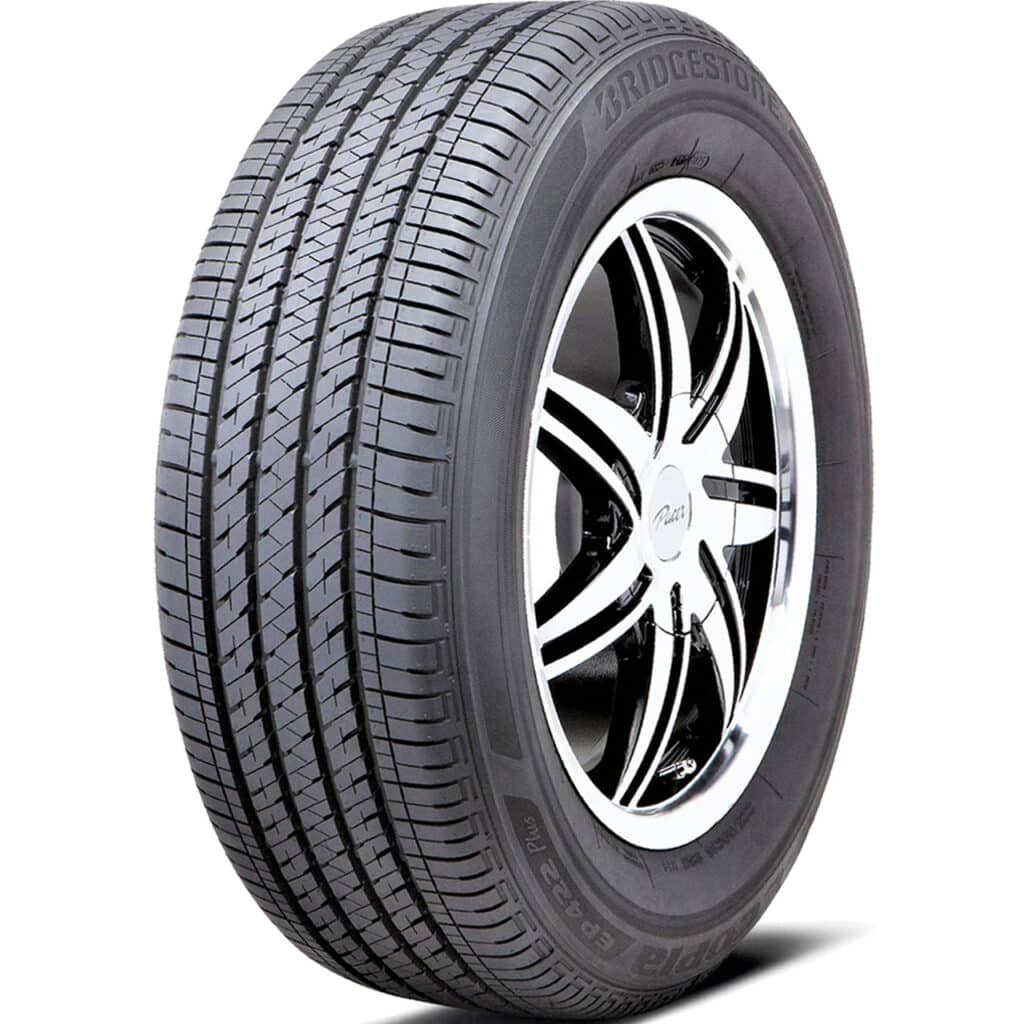
Price Check
Check the price of this tire at the following retailers:
Amazon TireRack DiscountTire Goodyear PriorityTire SimpleTireDon't know the correct size tire to purchase? Start here!
While we’re in the Ecopia lineup, I have to mention a tire designed for passenger cars. The Ecopia EP422 Plus is essentially designed like the previous one. The goal of Bridgestone was to make a tire that has excellent performance and can improve fuel economy.
Things are similar to the previous tire – excellent performance in dry conditions as a touring tire, but not a performance-oriented one. The grip and traction levels are on the higher side of this category, so you won’t feel like you’d need more. With that, you also get short braking distances, meaning that safety won’t be an issue as well. On the handling side of things, the tire is fine and is decently responsive for a touring tire.
Moving on, we have another positive side of the Ecopia EP422 Plus, and that’s the wet performance. There is plenty of grip and traction on damp roads to keep the car in check, and the tire feels planted even if you push it a bit. The tire is easy to control at the limit, so there’s more than enough performance for a safe journey. Thanks to the tread pattern, you also have excellent aquaplaning resistance, which keeps the tire on the road even at higher speeds.
My thoughts on all-season tires are that they aren’t ideal for driving on snow. While the same applies to the Ecopia EP422 Plus, it delivers some pretty usable performance. In lighter conditions, it delivers decent levels of traction, and it doesn’t struggle as much over packed snow while keeping the braking distances short. Naturally, in harsher conditions, the performance will degrade.
The Ecopia EP422 Plus does many things good, but I believe that one of the best is the refinement. Within its class, you are looking at one of the most comfortable tires. Vibrations are almost entirely eliminated, and bumps are smoothed out. The noise levels are also very low, almost to a point where you won’t even hear the tire, especially on cars with better sound insulation.
Bridgestone sells the Ecopia EP422 Plus with a 70,000-mile treadwear warranty, which may not be the best in this class, but it’s near the top. As for the price, it starts from around $150, which like the previous model, isn’t the most affordable option, but it’s a pretty good one.
Pros
- Very high refinement levels
- Excellent all-round performance
- Very usable on snow
Cons
- A bit on the pricy side
- It’s not a very sporty tire
#5. Bridgestone Turanza Serenity Plus
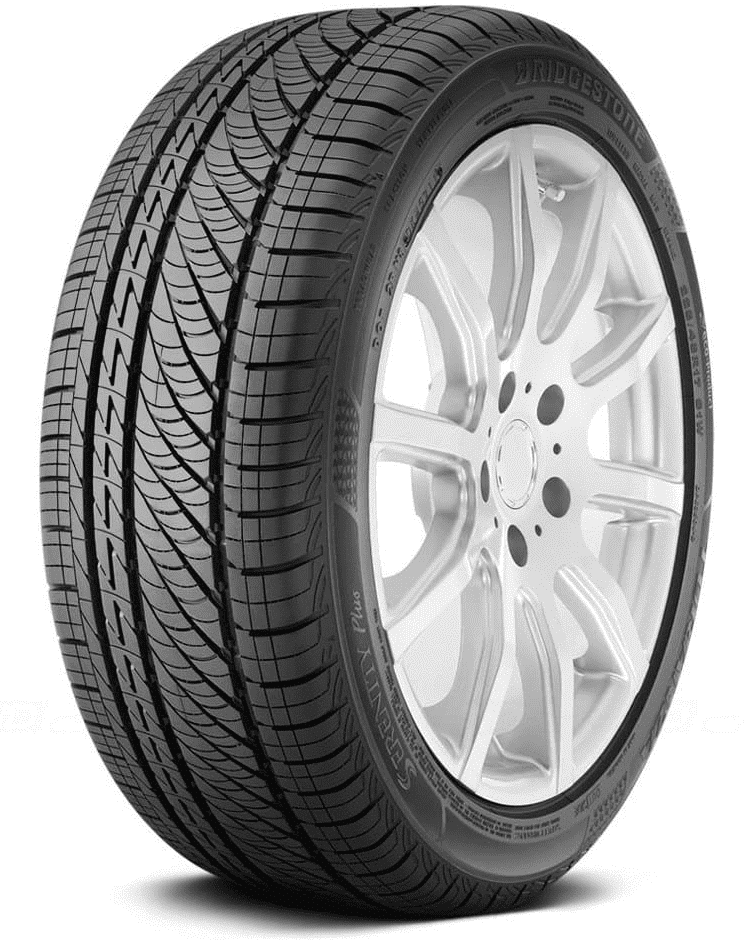
Price Check
Check the price of this tire at the following retailers:
Amazon TireRack DiscountTire Goodyear PriorityTire SimpleTireDon't know the correct size tire to purchase? Start here!
Not, I’m not a Bridgestone fanboy, the company just makes good tires. The Turanza Serenity Plus isn’t a common sight these days because it’s an older model but still manages to deliver excellent performance. That, combined with the lower price point, is why you see it here.
If you’ve driven something newer from the Bridgestone lineup, you’ll notice a difference where the Turanza Serenity Plus will feel like a step back. With that said, the overall experience is very positive. The performance in terms of grip and traction is plentiful, and it won’t feel safe in normal driving conditions. While most of the premium competitors are slightly ahead, it still delivers excellent performance, better than some mid-range options.
The story remains the same in wet conditions, meaning that the Turanza Serenity Plus won’t get compared with the best. With that said, as a touring tire that you’ll want to use to save fuel, it’s more than enough. The compound is sticky enough for driving around town or on the highway, meaning that you’re getting exactly what you want. While that’s good, I have to say that this is not a tire that you should push hard. It can handle that, but only slightly. The best thing about the wet performance is the aquaplaning resistance which seems to hold the tire very well, even in the premium category.
Even though the Turanza Serenity Plus is an all-season tire, I wouldn’t exactly say that it’s a good one. There is some usable performance in the lightest snow conditions, but if you get a bit carried away, it becomes a bit of a handful to handle.
What this tire lacks in performance, it makes up in refinement. Even by today’s standards, the Turanza Serenity Plus is still a very quiet tire. Yes, the QuietTrack is a quieter tire, but this one comes close and produces minimal noise even over rougher roads. The comfort levels are also very high, as the tire evens out the smaller road imperfections while softening up the larger ones without transferring vibrations to the cabin.
Even though the Turanza Serenity Plus is over a decade old, it’s still competitive with the latest and greatest in terms of longevity. The treadwear warranty ranges from 50,000 to 80,000 depending on the speed rating, which isn’t too far off from the newer models on the market. As for price, since it’s an older model, the prices are dropped, and you can find the tire for as little as $100 for the smaller sizes.
Pros
- Comfort and noise levels are easily comparable to newer models
- Performance is good enough for daily driving
- Long treadwear warranty
Cons
- The responsiveness isn’t spectacular
- Performance in snow conditions is poor
#6. Hankook Kinergy Eco 2
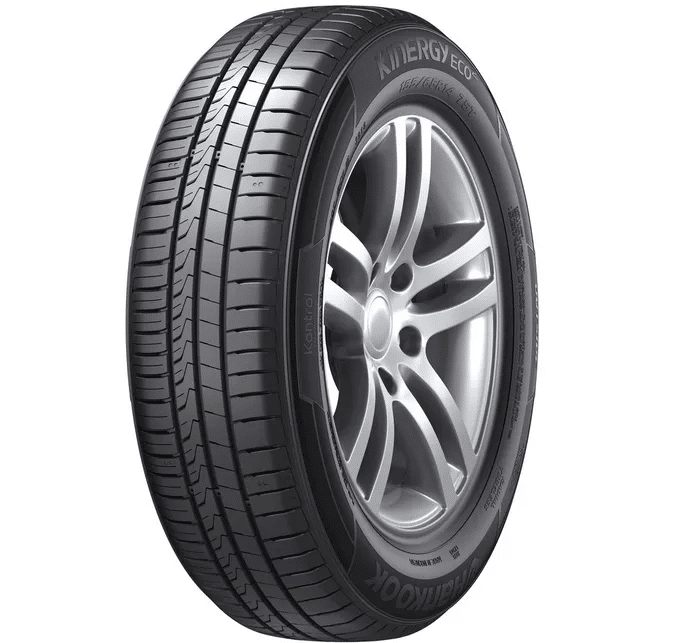
Price Check
Check the price of this tire at the following retailers:
Amazon TireRack DiscountTire Goodyear PriorityTire SimpleTireDon't know the correct size tire to purchase? Start here!
A tire with low rolling resistance doesn’t necessarily mean it needs to be from a premium manufacturer. Many mid-range options also have a few models for this application, including Hankook. The Kinergy Eco 2 is a summer tire with a strong emphasis on improving fuel economy and longevity.
Summer tires are generally very good performers in dry conditions, and the same goes for the Kinergy Eco 2. While the tire won’t compete with its premium rivals, it isn’t lacking in performance too much. The levels of traction are doing an excellent job at eliminating wheel spin, and the grip in the corners is more than enough, even for a slightly faster drive. Two areas where the tire struggles are braking and handling. Sure, I can understand the handling, as it’s a touring tire, but I was hoping for a bit shorter braking distances.
Things don’t seem to improve all that much in wet conditions. For a mid-range tire, the Kinergy Eco 2 delivers more than usable performance, and as long as you’re not forcing it, you’ll be perfectly fine. In this class, there are better performers, but this one is above average. Like in dry conditions, the braking distances are a bit longer than I wanted them to be. Also, the aquaplaning resistance falls a bit behind some of its direct competitors.
Hankook doesn’t make any incredible promises in terms of refinement, so my hopes weren’t too high. With that said, I was surprised by the Kinergy Eco 2. The comfort levels are pretty good, and the tire delivers a very soft ride, easily comparable with some premium options on the market. Then there are the noise levels which may not be up to Bridgestone’s standards, but in the mid-range segment are quite low.
The biggest downside is that Hankook doesn’t offer a treadwear warranty for the Kinergy Eco 2. With that said, at a starting price of around $60, you shouldn’t expect to get a lot, so I wouldn’t classify it as the worst purchase ever.
Pros
- Surprisingly well refined
- Decent amount of grip and traction in dry conditions
- Very affordable
Cons
- No treadwear warranty
- Braking distances in dry and wet are a bit longer
#7. Firestone Champion Fuel Fighter
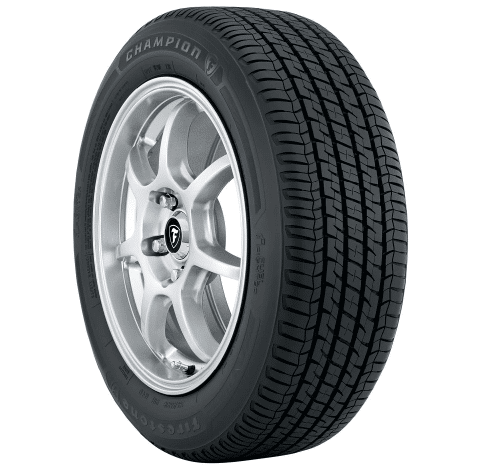
Price Check
Check the price of this tire at the following retailers:
Amazon TireRack DiscountTire Goodyear PriorityTire SimpleTireDon't know the correct size tire to purchase? Start here!
The premium manufacturers aren’t the only ones making fuel-efficient tires. In the mid-range segment, we have Firestone with its Champion Fuel Fighter tire, designed as an all-season touring tire, capable of delivering a refined driving experience from a tire capable of improving your mpg.
As long as the roads are dry, the Champion Fuel Fighter can offer excellent performance within this class. While the premium tires are better, this isn’t a poor choice, thanks to the high levels of grip and traction. It won’t win any awards on the track, but it will be plenty for regular driving or even a slightly spirited one. It’s well composed and feels planted, which, combined with the decent responsiveness, makes for a pretty good performer in these conditions.
Unfortunately, things aren’t so good when driving in wet conditions. The Champion Fuel Fighter is a good performer and has reasonable performance levels on damp surfaces, but you will start to notice the difference between it and its premium competitors. You will have a safe driving experience if you don’t push it hard. As a result, you won’t have an issue with the slightly longer braking distances or the average aquaplaning resistance.
The biggest surprise is in winter when driving on snowy roads. Don’t get me wrong, the Champion Fuel Fighter isn’t a replacement for a proper winter tire, but it’s not the worst choice either. It has a decent amount of traction in lighter conditions, and it’s easy to handle. You can use it as long as the conditions aren’t too harsh, meaning deep snow or ice is out of the question.
Touring tires are all about comfort and noise levels, and the Champion Fuel Fighter delivers on that front. While it isn’t the most comfortable tire on the market, I rank it pretty high in its class. It deals with bumps pretty good and minimizes vibrations to a point where you won’t notice them. In terms of noise, it almost feels like a premium tire, minimizing noise even when you’re driving on the highway. You may hear a hum over rougher roads, but it’s not terrible.
Despite being a mid-range option, the Champion Fuel Fighter offers a premium-like treadwear warranty coming in at 70,000 miles. This doesn’t come cheap, and even though it’s more affordable than some of its premium rivals, it’s not the cheapest out of the mid-range ones. With a starting price of around $120, it’s not something that you can say is the most affordable.
Pros
- Very good dry performance
- Aquaplaning resistance is superb
- Long tread life warranty
Cons
- Pricey
#8. Continental PureContact LS
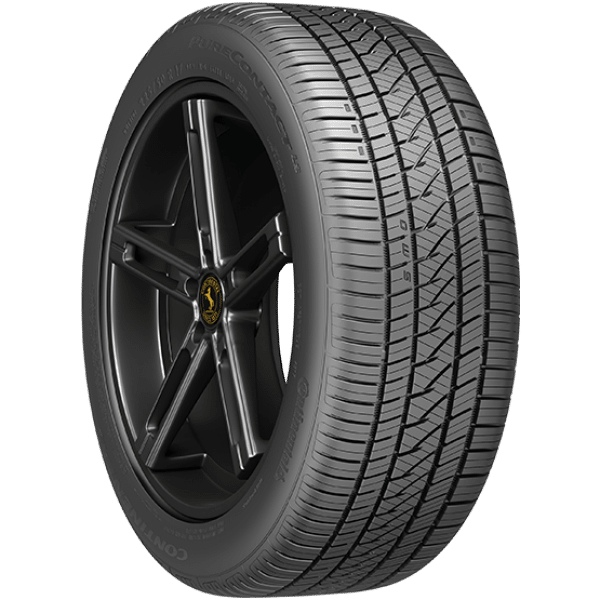
Price Check
Check the price of this tire at the following retailers:
Amazon TireRack DiscountTire Goodyear PriorityTire SimpleTireDon't know the correct size tire to purchase? Start here!
Going back to the CUV and SUV owners, we have a tire from Continental. The German engineering offers us the PureContact LS, a tire designed for comfort, performance, and most importantly, reduced rolling resistance. Despite the SUV badge, the tire comes in a wide range of sizes, so you can fit it to passenger cars easily.
Continental implemented a lot of technologies in the PureContact LS, resulting in a tire with excellent performance in dry conditions. The traction is more than enough to get you going without too much drama, even on a more powerful car. The grip in the corners is also excellent, keeping the tire planted even when you’re driving more aggressively. I also have to praise the handling, which is very precise and responsive for a touring tire, almost giving it a sporty feeling.
If you want one of the best wet performers on the market, then look no further than the PureContact LS. Regardless of the conditions, the tire will have no problem with grip and traction, delivering consistent performance without breaking a sweat. This is combined with the handling, which is predictable and very easy to correct, meaning that you won’t have any issues. Finally, the aquaplaning resistance is among the best in this class, keeping the tire planted on the road even in the harshest rain.
No tire is good at everything, and the PureContact LS fails the snow test. To be honest, fail is a bit harsh, but I can say that it’s not the best. There is a good amount of traction in lighter conditions, and the tire doesn’t seem to struggle as much. The problem is in the corners, where even a slightly faster speed or a bit more throttle will mean that you’ll need to correct something. Like most all-season tires, driving in harsher conditions is an absolute no, as there is no usable performance.
The refinement is another area where the PureContact LS doesn’t compete with some of its rivals. It’s not the harshest tire I’ve driven, but the “sporty” handling means that the ride will be a bit on the firm side, mainly struggling with the larger potholes. The noise levels are also not very low, and at higher speeds, the tire produces a hum that isn’t overly intrusive, but you can hear it.
Going back to the positive stuff, we have the treadwear warranty, which comes at 70,000 miles. It’s not the longest, but it’s very decent when compared with some of its rivals. The entire package comes at a price of a little over $100 for the smallest size, making it an affordable-ish option.
Pros
- Excellent performance in dry and wet conditions
- Responsive handling
- Short braking distances
Cons
- Snow performance is average
- The ride is a bit firm
#9. Continental CrossContact LX25
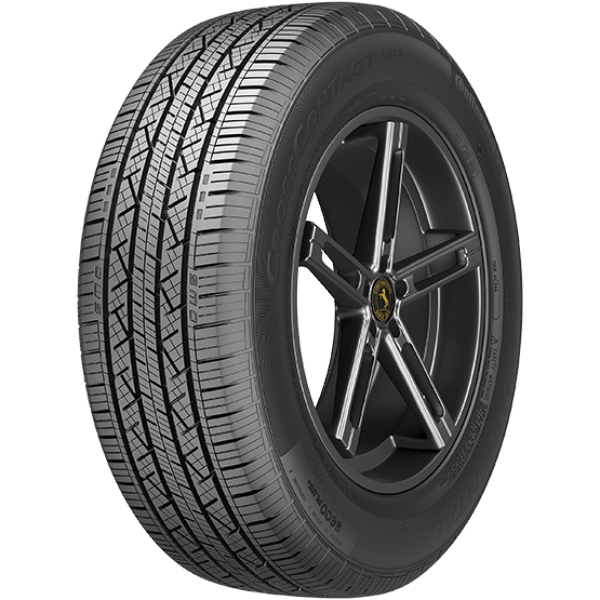
Price Check
Check the price of this tire at the following retailers:
Amazon TireRack DiscountTire Goodyear PriorityTire SimpleTireDon't know the correct size tire to purchase? Start here!
Another Continental tire worth mentioning that delivers improved fuel economy is the CrossContact LX25. Unlike the previous one, this is a tire designed specifically for CUVs, SUVs, and light trucks, but things are very similar as far as the promises go. It’s an all-season touring tire designed for reduced rolling resistance without sacrificing performance and refinement.
Continental tires rarely disappoint in terms of performance, and the CrossContact LX25 is no exception. The tire delivers consistently high levels of grip and traction, offering more than what you’d need for regular driving. You can even push it a bit and still get a lot from it, but it defeats the purpose of the reduces rolling resistance. With that said, in the handling department, you are looking at a slight disadvantage if you’re an enthusiast. While it is decently responsive, it’s nowhere near what a sporty tire can do.
When it comes to wet performance, the CrossContact LX25 is a tire that I can’t complain about. Traction during acceleration is excellent, minimizing wheel spin even in the more aggressive scenarios. You can push the tire a bit in the corners before it starts to understeer, which is a high praise for a touring tire. The tread pattern excellently utilizes the grooves and sipes, offering excellent aquaplaning resistance.
Usability in snowy conditions is good, but the CrossContact LX25 isn’t a winter tire, so there are some limitations. The traction in lighter conditions over unpacked snow is decent, while the grip in the corners is enough as long you’re driving normally. Packed snow poses a bit of a problem, but you can manage it if you need to. Driving in harsher conditions with this tire isn’t recommendable, so I’d say go for winter tires if the winters aren’t mild in your area.
Refinement is another aspect of the CrossContact LX25 that’s very good, which is to be expected. Continental’s technologies are doing an excellent job at eliminating vibrations when driving over a pothole and softening up road imperfections. The noise levels are also low, regardless of which speed you’re driving at, but there is something that I have to mention. When you hit a pothole, you will hear a deep thump, which sounds muted, but you can still hear it.
A tire from this class is expected to last a long time, and with a treadwear warranty of 70,000 miles, you should see the CrossContact LX25 serve you for a long time. Continental is known for making slightly more affordable tires, and with a starting price of around $150, it shows as it’s slightly cheaper than some of its rivals.
Pros
- Superb comfort levels
- Among the best wet performers in its class
- Grip and traction levels are high
Cons
- Hitting a large hole produces a thump
- The handling isn’t this tire’s forte
#10. Nokian eNTYRE 2.0
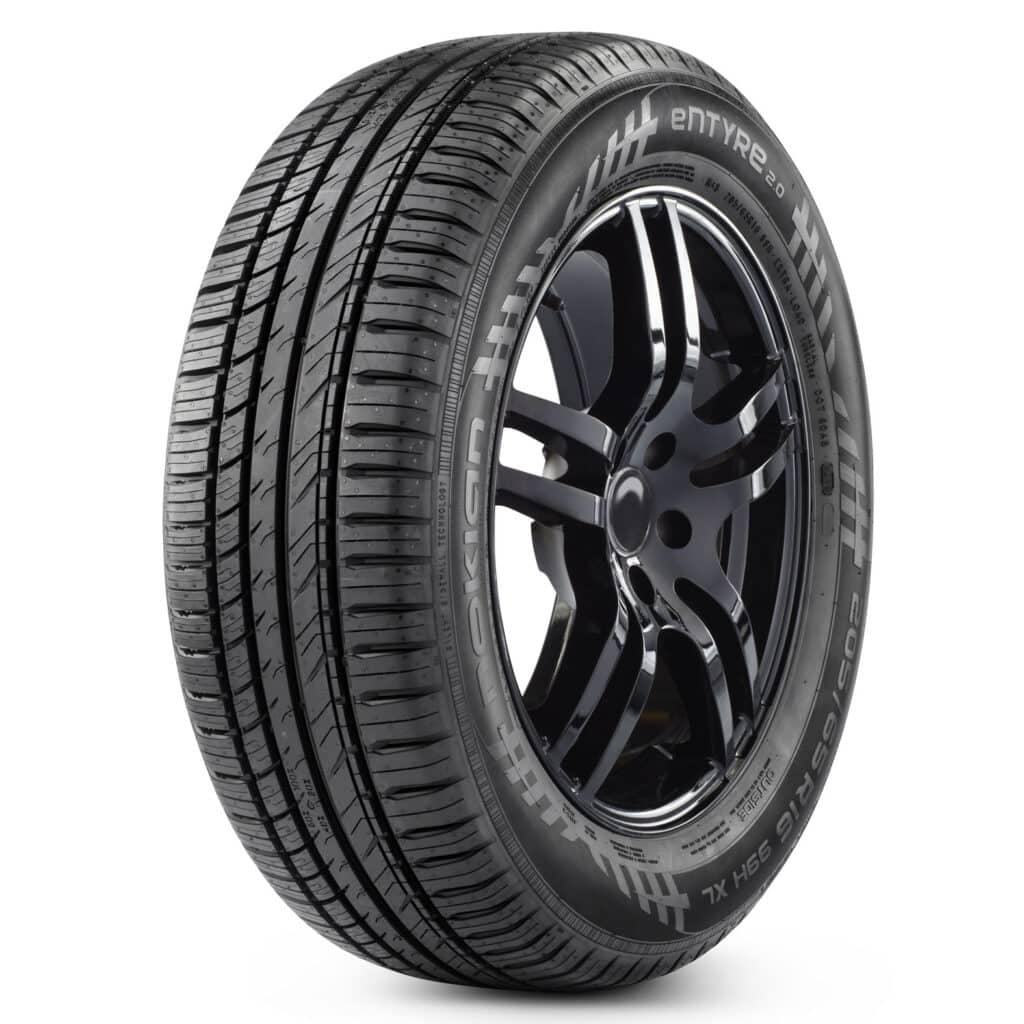
Price Check
Check the price of this tire at the following retailers:
Amazon TireRack DiscountTire Goodyear PriorityTire SimpleTireDon't know the correct size tire to purchase? Start here!
The last fuel-efficient tire on my list is a budget-friendly one from Finland. Nokian is usually known for its winter tires, but it has some very decent all-season models like the eNTYRE 2.0. This is a tire designed to tick all the boxes you’d need from a touring tire – longevity, low rolling resistance, and usable performance throughout the year.
Dry performance with the eNTYRE 2.0 is pretty good, considering that it’s a mid-range tire. It delivers high levels of grip and traction when compared with tires from its class, so it’s not a tire that will disappoint. Getting overly aggressive will reveal that it’s not a premium option, something that most people will be fine with. In terms of handling, it’s a touring tire, so the responsiveness and precision aren’t a key aspect, so you shouldn’t expect it to be excellent in this regard.
In wet conditions, the performance degrades a bit, but the eNTYRE 2.0 remains a safe option for sensible drivers. On damp roads, the grip and traction levels are decent, but it will become a handful if you get overly aggressive, as you may start to struggle with the handling. On the flip side, the aquaplaning resistance is excellent, so you can expect it to be very stable even when driving on the highway in heavy rain.
Driving in the snow with the eNTYRE 2.0 is a decent experience but far from what Nokian’s winter tires can offer. Generally, the tire is usable in lighter conditions as long as the snow is shallow and unpacked. The traction is good enough, and it doesn’t take too much effort to control the car. In harsher conditions, the tire will begin to struggle, which is where the limit is set for most all-season tires.
The biggest surprise from the eNTYRE 2.0 came from the refinement department. Mid-range tires are generally good, but this one surprised me with its comfort levels. It has no problem absorbing vibrations and smoothing out smaller holes in the road, thus delivering a comfortable ride experience. The noise levels are also surprisingly low for a tire from this class, and you can only barely hear it when you’re driving at higher speeds.
Nokian made a durable tire, which is evident from the 80,000-mile treadwear warranty, which drops to 60,000 for the tires with a higher speed rating. The best part is that you get all of this performance from a tire that starts from a little under $80, making it a very good bang for the buck option.
Pros
- Long treadwear warranty
- Plenty of dry performance
- Well refined
Cons
- Handling in wet is average
- Snow performance is limited
How to get a few extra miles?
If you were paying attention to the intro, I mentioned that multiple aspects could impact fuel economy. I won’t say get a new car with better fuel economy, but I will help you get the most out of the one you have.
Tires
Yes, I mentioned that the tires could have an impact, but it’s not just the model. Every car comes with a specific set of instructions from the manufacturer about how it should be used, including the tire pressure. You could find this information on a sticker on the door sill or in the user manual.
Depending on the weight of the car and the additional weight you carry, the pressure should be adjusted accordingly. For example, Toyota says that my Corolla’s front tires should be 32 psi, and the rear ones should be 30.5 if there’s no load in the back. If I have two people and some luggage, then I should go for 32 psi on all 4 of them.
Tires aren’t perfect, and the pressure doesn’t remain constant throughout the year, so I’d recommend checking the pressure occasionally. Most modern cars have sensors, but those kick in only when the pressure is too low and unsafe.
Lose some weight
No worries, this doesn’t apply to you owners, just the car. More weight means that the engine will need to work harder to get the car moving. The more the engine works, the more fuel it needs to do so, and you probably get where this is going.
Check your car and see if there are items that increase the weight but you don’t need. No, I’m not talking about leaving your wife at home. Anything that’s in your car and you don’t need for the trip can be left at home. It may not sound like much, but every little thing counts. Unnecessary tools, the roof rack that you don’t use, and plenty of other items around your car can add up to the weight resulting in a slightly increased fuel consumption.
Change the way your drive
In most cases, a person’s driving habits can have a massive impact on fuel consumption. Accelerating aggressively may get you up to speed faster but will harm the economy. To avoid this, try to accelerate more gently and if you drive a manual car, shift up somewhere lower in the RPM range. As most cars are turbocharged these days, the maximum torque is already around the 2k mark, so there’s no real point in redlining through the gears.
Anticipation is another aspect of your driving style that can make or break the fuel economy. If you see that the next traffic light is red and you’re a couple of hundred yards away, release the throttle and let the car coast in gear. You will need to use the brakes at a certain point, but with this approach, you’ll allow your car to use engine braking, at which point the fuel consumption is 0. There’s a good reason for this, and I can explain it, so pay a visit to the comment section and let me know if you what to know more.
“I paid for the entire speedo, and I plan to use it” is a common joke in the car world, and it makes sense. Owning a car that can do over 200 mph means that you have the option to experience that, but it also means that you’ll be refueling every 15 minutes. The car’s speed is determined by the gear it’s in, the ratio, and the RPM, for the most part at least, meaning that the higher the speed, the higher the gear and RPM. As you go higher in the rev range, the engine needs more and more fuel, so the economy drops. With this, I also have to point out that driving over the speed limit is against the law and, in most cases, unsafe, so drive according to the signs on the road.
Speaking of speed, there are some people that don’t manage to keep it constant, leading to increased fuel consumption. This is for those that don’t keep the engine at a constant speed and accelerate and then let off the gas, then accelerate again and let off the gas, and so on. While the fuel consumption when you’re off the throttle is 0, when you stand on it, the engine starts sucking the fuel from the tank, and the average is significantly increased. To avoid this, try to keep the revs steady, which will even things out and lead to better fuel economy.
Regular maintenance is the final aspect that I’ll talk about and is one of the several crucial things that can ruin the fuel economy. Without going into great details, I’ll say that a healthy engine is a happy engine, and a happy engine is an optimal one. As long as the engine is working optimally, the fuel consumption will be better when compared with one that isn’t healthy.



